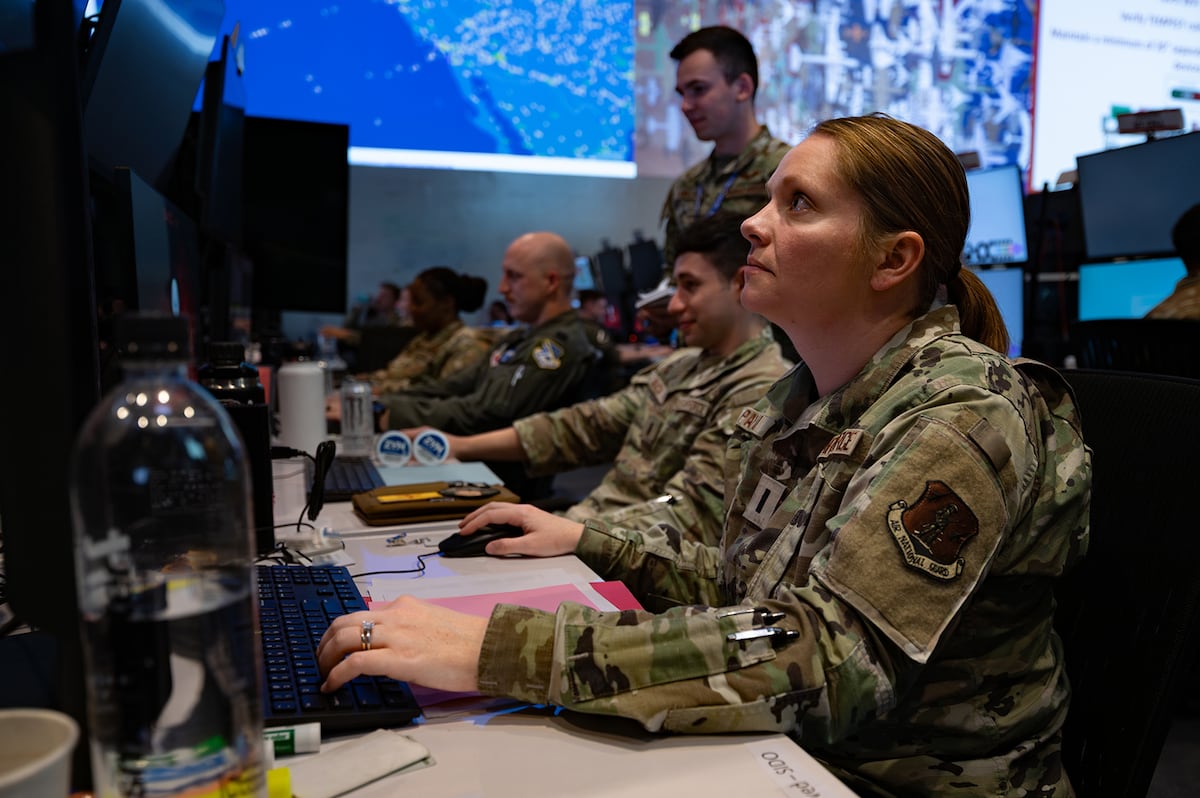Air Force experiments with using AI to seek combat targets

The U.S. Air Force recently conducted an exercise in which AI was used to recommend targets in a high-pressure combat scenario.
Called “Experiment 3,” the four-day exercise took place last month and was described in a service release as the debut of “a novel planning and execution methodology, one never before executed” by the Air Force.
The 805th Combat Training Squadron, also known as the Shadow Operations Center — Nellis battle lab, saw participants use AI software to accelerate their decision-making and targeting processes over four days in a simulated battle space.
“We’re not just testing software, we’re challenging assumptions, validating tactics and shaping the operational architecture the Air Force and our allies will rely on in future conflicts,” Lt. Col. Shawn Finney, commander of the 805th, said in a release. “This was a proving ground for the kill chain of tomorrow.”
The unprecedented exercise was designed to speed up military decision-making and “reduce cognitive load” on humans, per the release. The AI “offered real-time recommendations to dynamic targeting teams.”
The AI software used during the exercise was developed under the Maven Smart System. The software ingests data and produces analyses to “prioritize targets,” according to the Missile Defense Advocacy Alliance.
RELATED
During the exercise, AI was used to create a command-and-control pipeline, as well as perform “intelligence, surveillance, and reconnaissance and targeting capability” tasks, the release said. The goal was to create a “resilient, data-driven, and automated kill chain across operational and tactical levels.”
Observer teams noted the differences between the assessments made by human service members with experience, compared to recommendations generated by AI. It was found that human judgement “such as intuition, experience and situational awareness” was “complementary” to what was machine-generated, according to the release.
The more accurate information produced by humans was used to refine the AI algorithms.
“The [battle lab] enables a ‘drive-before-you-buy’ approach, ensuring the tools we field are effective, intuitive and ready for the fight,” Finney said in the release. “This experiment brought us one step closer to the future of command and control.”
Zita Ballinger Fletcher previously served as editor of Military History Quarterly and Vietnam magazines and as the historian of the U.S. Drug Enforcement Administration. She holds an M.A. with distinction in military history.
Read the full article here









